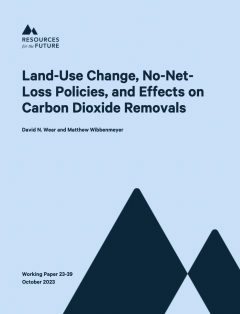
Carbon dioxide removal (CDR) from the atmosphere, a critical component of all strategies for restricting global warming to 1.5°C, is expected to come largely from the continued sequestration of carbon in vegetation, mainly in forests.
Because CDR rates have been declining in the United States, in part from land-use changes, policy proposals focus on altering land uses through afforestation, avoided deforestation, and no-net-loss strategies. Estimating policy effects on CDR requires a careful assessment of how land-use change interacts with forest conditions.
Using a model of land-sector emissions that mirror inventories generated by the US government, this report evaluates how alternative specifications of land-use change in the United States affect projections of CDR.
